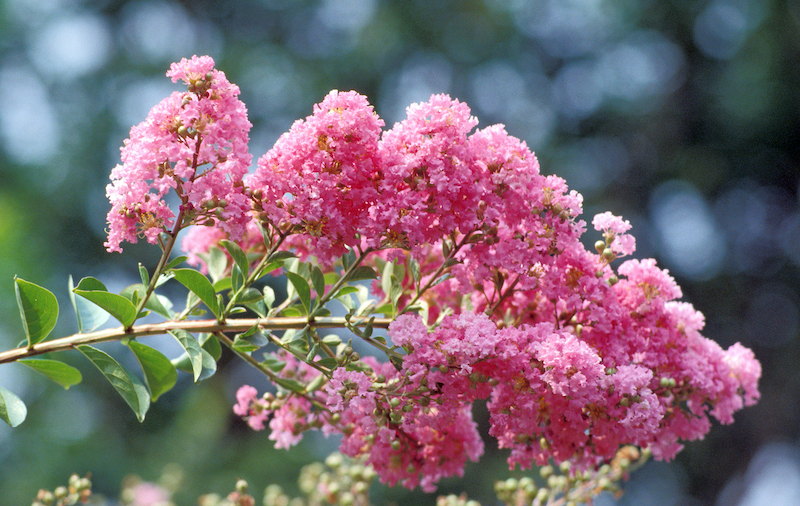
Southern gardeners love crape myrtles, but many don’t know how to properly care for them to realize the full, gorgeous blooms they expect in the summer.
University of Georgia Cooperative Extension agents regularly answer questions regarding proper care and maintenance of the popular flowering tree. The keys to success with crape myrtles include adequate sunlight, slightly acidic soil pH, good drainage, proper pruning, adequate fertilization, mulching and insect control.
They love the sun
Crape myrtles need full sun — at least eight hours or more of direct sun daily — to thrive and bloom. Crape myrtles will not be their best with less than eight hours of direct sunlight, so gardeners should check the sun patterns in their yards before choosing the right spot to plant crape myrtles.
Soil pH is an important factor in making sure your crape myrtles flourish. Crape myrtles thrive in slightly acidic soils with a pH of about 6 to 6.5 to use fertilizer efficiently. If that level is off, the gardener will be left with substandard plants. Before planting, have your soil tested by your local Extension office to properly prepare your site.
Prune in late winter, fertilize in early spring
Late winter is the time to prune crape myrtles, but it isn’t necessary to prune all of your crape myrtles every year. Some trees may not need to be pruned.
Prune the trees so that they maintain a natural shape, and thin out branches to allow light into the canopy. Do not just cut off the top of your crape myrtle trees. This pruning method is so drastic it is often referred to as “crape murder.”
Then, to maximize spring growth and summer bloom, fertilize crape myrtles in early spring just prior to new growth.
Fertilizers including 8-8-8, 10-10-10, 12-4-8 or 16-4-8 will work fine and are ideal for crape myrtles, but don’t go overboard.
Overfertilizing trees will cause excess growth and reduce the number of blooms on each tree. Soil test results will include a recommendation for the proper amount of fertilizer, which can be applied directly over the tree’s mulch.
Mulch to fight weeds, trap moisture
When planting crape myrtles, gardeners should install a layer of mulch about 3 to 5 inches deep in an area twice as large as the planting hole.
Insect damage is a frequent problem on crape myrtles and aphids cause much of that damage. Aphids release bodily fluids onto the foliage and the resulting “honeydew” can lead to sooty mold, a black discoloration that can occur in the summer and fall.
Sooty mold usually causes little damage, but it can reduce the plant’s vigor. Crape myrtle cultivars that are resistant to aphids are available, or you can treat other cultivars with insecticides to reduce sooty mold. Always carefully follow label directions on all pesticides.
By following the practices outlined here, your crape myrtles should perform their best for years to come. Contact your local Extension office to learn more.






